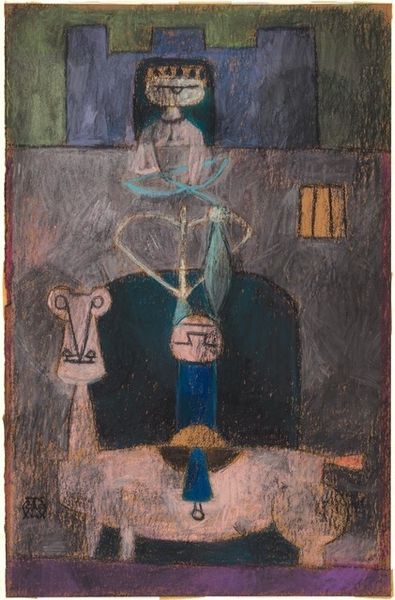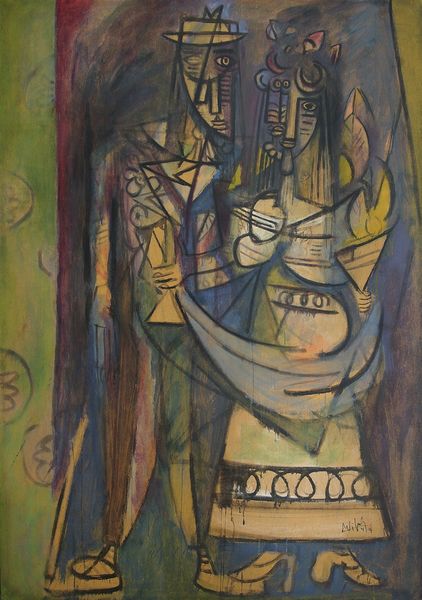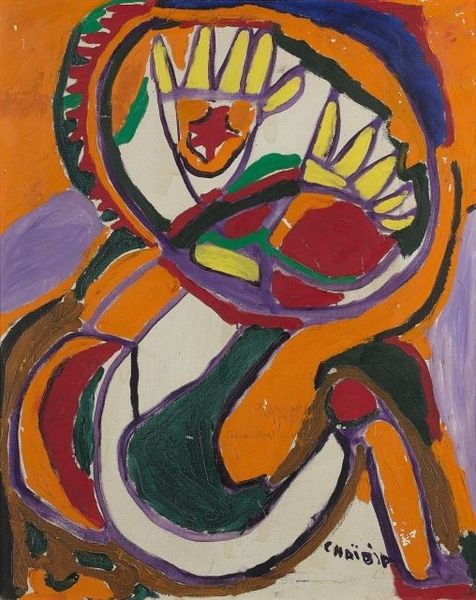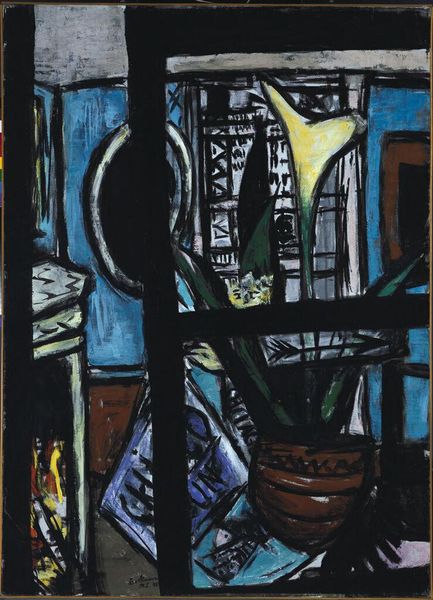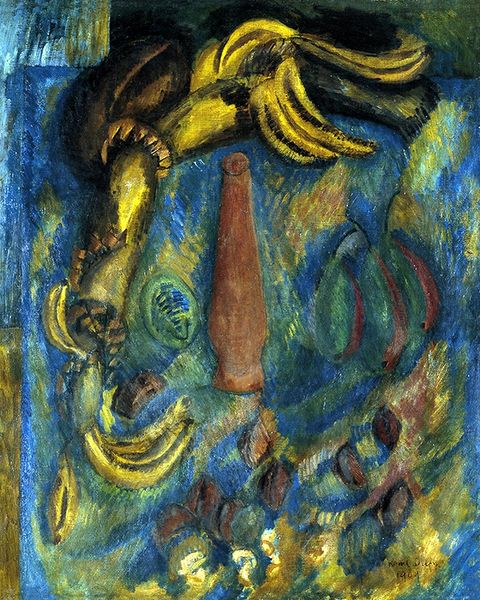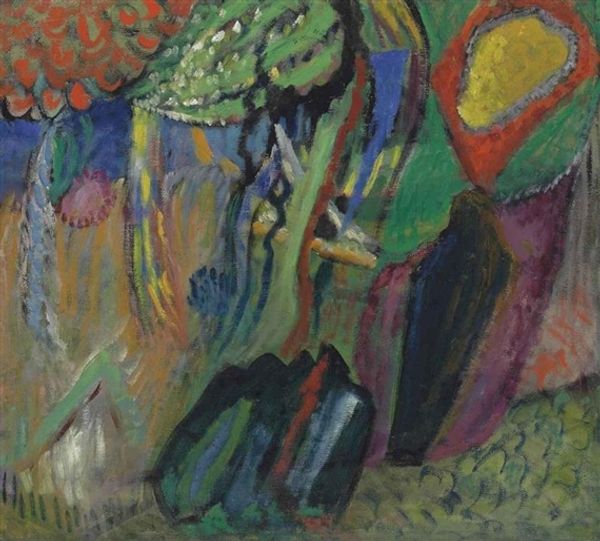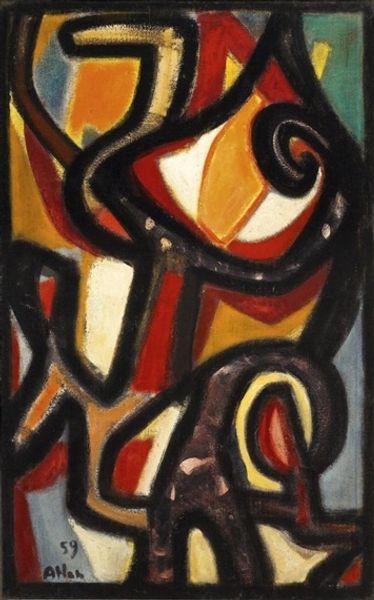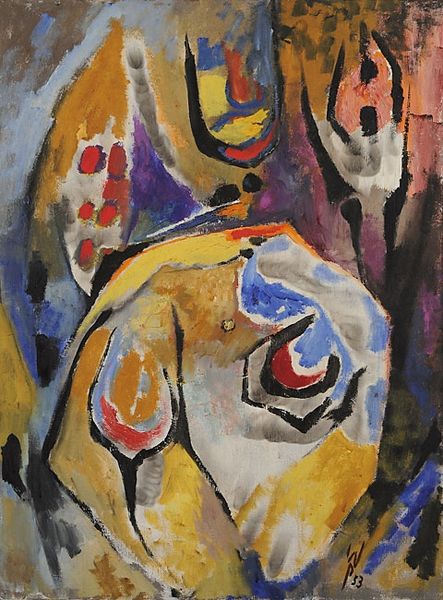
Dimensions: support: 762 x 559 mm
Copyright: © The estate of Duncan Grant | CC-BY-NC-ND 4.0 DEED, Photo: Tate
Curator: Duncan Grant’s “The Tub,” painted on canvas with dimensions of 762 by 559 millimeters, immediately strikes me as a rather enigmatic take on the everyday. What's your take? Editor: Well, there's an intriguing blend of Matisse and something...primal. That yellow, slightly sickly, dominates. And the figure, almost a totem, feels less about bathing and more about some private ritual. Curator: Grant, part of the Bloomsbury Group, often challenged conventional Victorian sensibilities. It is likely that “The Tub” reflects early 20th-century discussions around sexuality and the body. Editor: Right, and within the politics of the gaze, Grant's subversion is really interesting. Is he objectifying, celebrating, or queering the figure, in a moment where public displays of sexuality were so taboo? Curator: The work, now held at the Tate Modern, continues to prompt discourse, blurring the boundaries between intimacy, identity, and artistic expression. Editor: Yes, it's a defiant statement, even now. One wonders what sort of bathing experience awaits behind those expressive strokes.
Comments
Join the conversation
Join millions of artists and users on Artera today and experience the ultimate creative platform.
tatemodern 6 months ago
⋮
The Tub shows a figure with flattened breasts, an accentuated abdomen and broad shoulders. A mirror is placed in the background of the painting, but it is partially covered by the figure itself, hiding its reflection from the viewer. These elements suggest a portrayal of the naked body that is not sensualised. Grant was a member of the Bloomsbury Group, a closeknit London community of artists, writers and intellectuals who embraced a culture of sexual equality and freedom. As is the case here, their works were often influenced by the aesthetics of sculptures arriving in Europe in the aftermath of colonial conquest. Gallery label, September 2024
